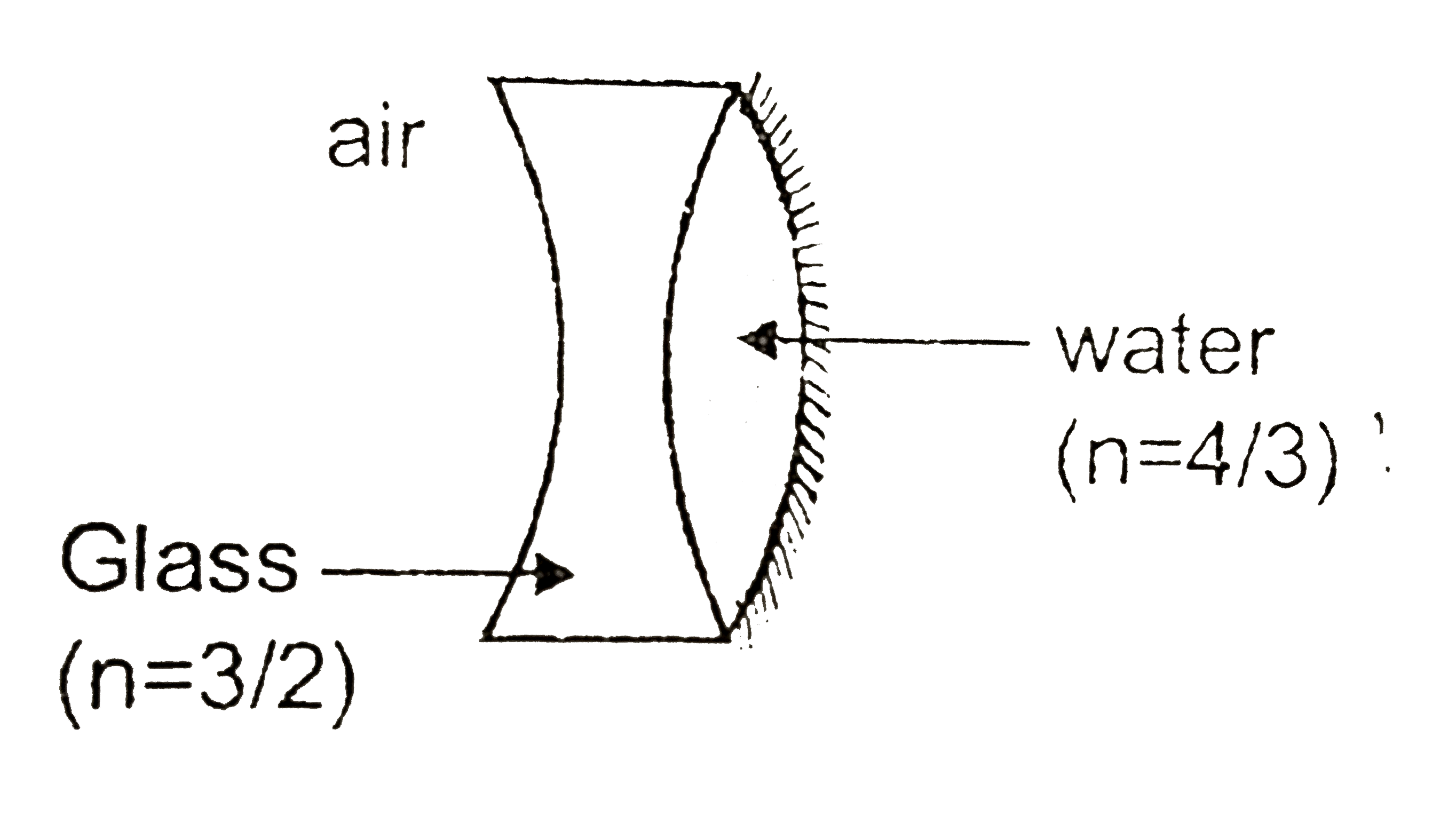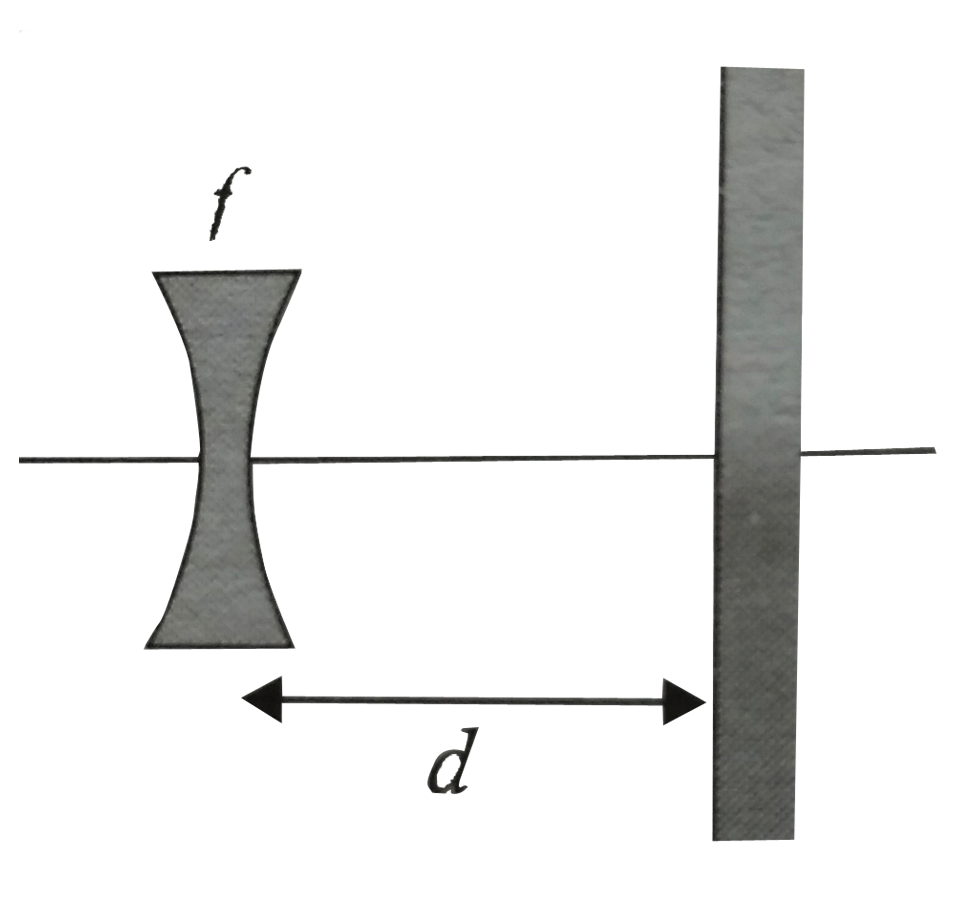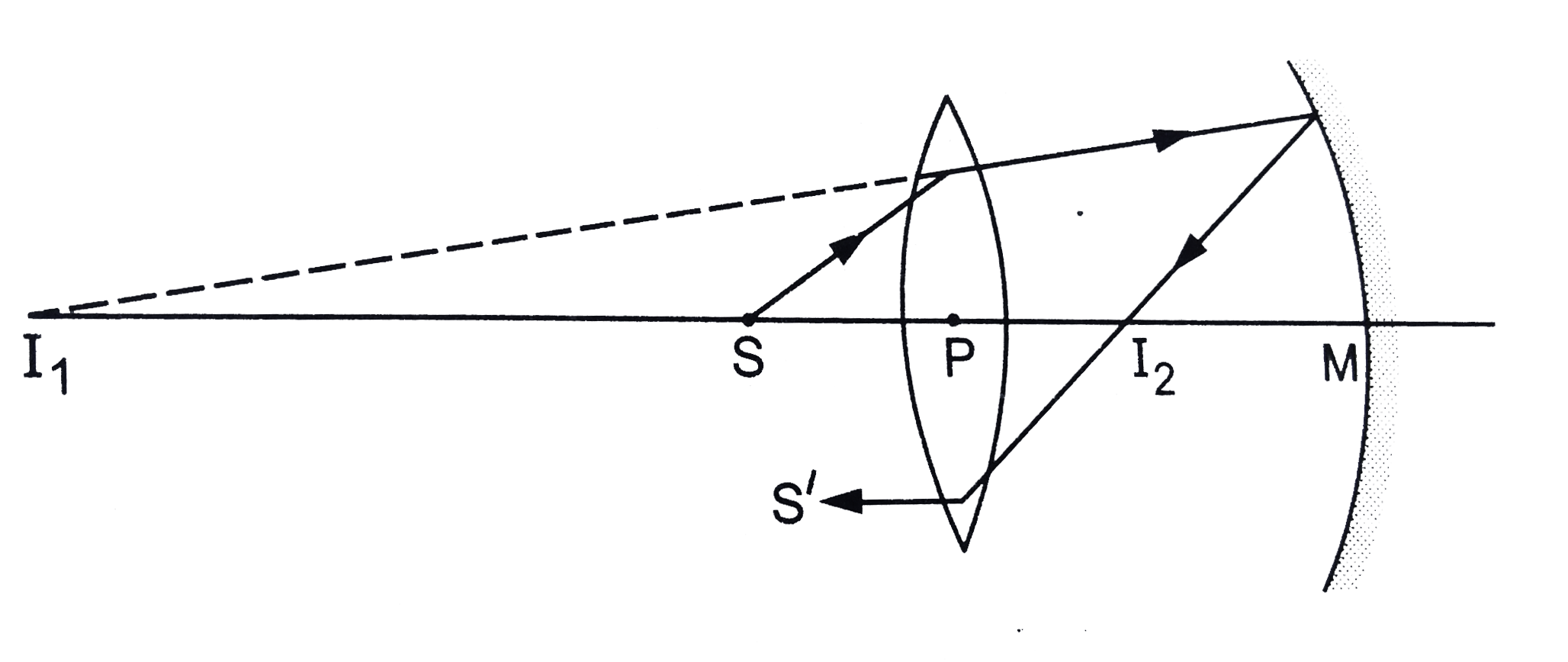_S01_028_Q01.png)
In the figure shown S is a point monochromatic light source of frequency 6×1014Hz.M is a concave mirror of radius of curvature 20 cm and L is a thin converging lens of focal length 3.75 cm AB is the principal axis of M and L.
Light reflected from the mirror and refracted from the lens in succession reaches the screen. An interference pattern is obtained on the screen by this arrangement.
Q. Distance between two coherent sources whichmakes interference pattern on the screen is
1 mm
0.5 mm
1.5 mm
0.25 mm
The correct Answer is:B
_S01_028_S01.png)
Wavelength of light λ=cf=5×10−7m
image formed by M: 1v+1−30=1−10⇒v=−15 cm also M=−vu=−−15−30=−12
This will be located at 15 cm left of M and 0.5 mm above the line AB.
This will act as an object for the lens L.
Now for the lens u=−7.5cm and m=vu=7.5−7.5=−1
So it will be at 7.5 cm to the left of L and 0.5 mm below line AB. see the ray diagram second image I2 and source S will act as two slits (as im YDSE) to produce the interference pattern. distance between them =0.5 mm(=d)
Topper's Solved these Questions
- BOOK - ALLENCHAPTER - WAVE OPTICSEXERCISE - Example 111videos
WAVE OPTICS
- BOOK - ALLENCHAPTER - WAVE OPTICSEXERCISE - Example 121videos
WAVE OPTICS
- BOOK - ALLENCHAPTER - WAVE OPTICSEXERCISE - Example 91videos
WAVE OPTICS
- BOOK - ALLENCHAPTER - UNIT & DIMENSIONS, BASIC MATHS AND VECTOR EXERCISE - Exercise (J-A)7videos
UNIT & DIMENSIONS, BASIC MATHS AND VECTOR
Similar Questions
_S01_029_Q01.png)
In the figure shown S is a point monochromatic light source of frequency 6×1014Hz.M is a concave mirror of radius of curvature 20 cm and L is a thin converging lens of focal length 3.75 cm AB is the principal axis of M and L.
Light reflected from the mirror and refracted from the lens in succession reaches the screen. An interference pattern is obtained on the screen by this arrangement.
Q. Fringe width isView SolutionAn object O is kept infront of a converging lens of focal length 30 cm behind which there is a plane mirror at 15 cm from the lens.
_E01_080_Q01.png) View Solution
View SolutionWhat is the focal length of a concave mirror of radius of curvature 16.0 cm?
View SolutionIn the figure shown the radius of curvature of the left & right surface of the concave lens are 10cm & 15cm respectively. The radius of curvature of the mirror is 15cm . equivalent focal length of the combination is
 View Solution
View SolutionA diverging lens of focal length 10cm is placed 10cm in front of a plane mirror as shown in Fig. Light from a very far away source falls on the lens. What is the distance of final image?
 View Solution
View SolutionA converging lens of focal length 20 cm and a converging mirror of focal length 10 cm are placed 60 cm apart with common principal axis. A point source is placed in between the lens and the mirror at a distance of 50 cm from the lens. Find the locations of the images formed.
View SolutionA converging lens of focal length 15 cm and a converging mirror of focal length 10 cm are placed 50 cm apart with common principal axis. A point source is placed in between the lens and the mirror at a distance of 40 cm from the lens. Find the locations of the two images formed.
View SolutionIn Figure ., L is a converging lens of focal length 10cm and M Iis a concave mirror of radius of curvature 20cm. A point object O is placed in front of the lens at a distance of 15cm. Ab and CD are optical axes of the lens and mirror, respectively. Find the distance of the final image formed by this system from the optical center of the lens. The distance between CD and AB is 1cm.
 View Solution
View SolutionA converging lens of focal length 15 cm and a converging mirror of focal length 20 cm are placed with their principal axes coinciding. A point source S is placed on the principal axis at a distance of 12 cm from the lens as shown in figure. It is found that the final beam comes out parallel to the principal axis. Find the separation between the mirror and the lens.
 View Solution
View SolutionA thin converging lens of focal length f = 25 cm forms the image of an object on a screen placed at a distance of 75 cm from the lens. Now the screen in moved closer to the lens by a distance of 25 cm. The distance through which the object has to be shifted so that its image on the screen is sharp again is
View Solution

